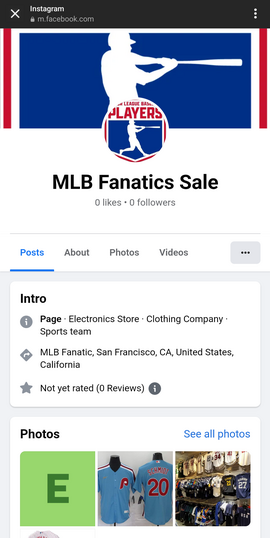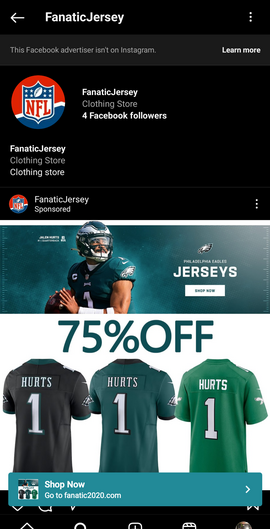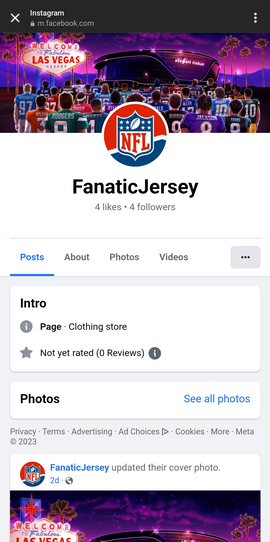Advertisers and Leeches
I did something this week I never do on purpose: I clicked on an ad. Shameful, I know, but I had a reason. My wife and I had talked about getting some Philly sports apparel because we don’t have much and we’ve been going to more games. Pro sports apparel is expensive, which is a large part of the reason I haven’t bought any recently, so when I saw an ad on Instagram with a coupon code for Eagles appparel, it seemed reasonable to check it out. It took me to the Eagles store (store.philadelphiaeagles.com), I looked around for a while, didn’t buy anything, and moved on with my night.
The next day, I saw another ad, this time for Phillies jerseys, with a higher percentage off. It looked like an ad for the Fanatics store, so I decided to see what they had marked down. The first few items listed were from the 2022 Phillies playoff run, which seemed reasonable. They were probably marking things down to get rid of old stock. After looking for a few minutes, I noticed a few of the product images were…less than professional. That was the first red flag, so I looked at the domain: fanaticshopline[.]com, which is obviously not the real Fanatics domain. A whois lookup showed this domain was registered on May 15, 2023 for just one year and the contacts were all protected by a privacy service. For comparison, the real fanatics.com was registered in 1998, doesn’t expire until 2027, and clearly marks all of the contacts as Fanatics, LLC. I don’t know if this website is just a scam or if the shop is real but sells knockoff products, or something else, but the red flags were everywhere.
Over the next few days, nearly every ad I saw on Instagram was a variety of this. Philadelphia sports jerseys with huge markdowns from websites nobody has ever heard of. I had clicked on an ad from a legitimate store running a legitimate sale (to the extent a perpetual 30% off sale is legitimate, but that’s that’s a different discussion). Then the leeches showed up, a seemingly endless stream of grifters trying to catch people out on the coattails of real businesses. I looked at the Instagram/Facebook pages of a few of them and they were all similar. Instagram put up a banner that said “This Facebook advertiser isn’t on Instagram” and when I clicked through to the Facebook page, they were effectively empty. A token set of images and no or only a few followers.
A few screenshots:




With any detailed look these fall apart, but it’s easy to momentarily mistake them for a legitimate store. I like to think I’m generally aware of this sort of thing, but I still missed it at first. The exact details of any of these cases don’t matter, but they’re a look into an interesting problem.
As much as I dislike advertising in all forms, it’s the Internet business model we’re stuck with for now. In theory, if advertisers were all legitimate businesses and ads weren’t hyper-targeted, it wouldn’t be so bad. Unfortunately, we have this mess where one interaction with an ad drives what you see for days, meaning you get the ads for the same things over and over again. My favorite example of this was after I bought my wife’s engagement ring. For months I saw ads for the exact ring I purchased and it didn’t seem to matter that I only needed one engagement ring. I bought an item, so maybe if they kept putting the same item in front of my face I’d buy another one. The opportunity for scams is rampant in this environment. Scammers can target ads to people searching for or interacting with real storefronts and the sheer volume of ads makes it more likely they’ll will fall for the fake ones.
This is just one example of the many things wrong with targeted advertising as a business model and one I hadn’t thought much about before. While I hate the business model and I hate seeing ads, not all ads are hated equally. Let’s say I’ve learned my lesson.